
In the rapidly evolving world of web design, staying ahead means adopting smart technologies. AI-driven website themes represent a leap forward, enabling designers and developers to create more personalized, efficient, and optimized user experiences. Whether you’re a freelancer, agency professional, or business owner, understanding how to harness AI tools in theme development will be a game changer for your projects and beyond.
What are AI-Driven Website Themes?

AI-driven website themes leverage machine learning algorithms and data-driven insights to automate design decisions, content organization, and performance optimizations. Instead of manually adjusting layouts, color schemes, and typography for each page, AI tools can analyze user behavior, brand guidelines, and accessibility standards to propose or implement theme configurations in real time.
These themes often include integrated features such as AI-based image optimization, dynamic content personalization, predictive navigation, and accessibility audits. By combining algorithmic intelligence with traditional front-end frameworks (like React, Vue, or WordPress), AI-driven themes deliver adaptive experiences tailored to individual visitors.
Benefits of AI in Theme Development
- Personalization at Scale: AI can dynamically adjust page elements—images, CTAs, product recommendations—based on user preferences and browsing history, boosting engagement and conversion rates.
- Faster Design Iterations: Machine learning models can generate multiple layout options or color palettes in seconds, reducing manual design cycles and accelerating time to market.
- Enhanced Accessibility: AI-driven audits can scan and fix contrast ratios, markup semantics, and keyboard navigation issues, ensuring compliance with WCAG standards.
- Performance Optimization: Adaptive image compression, code splitting, and predictive preloading powered by AI can drastically improve page load times and Core Web Vitals.
- Data-Driven Insights: Integrated analytics provide real-time feedback on theme performance, user interactions, and design efficacy, guiding continuous improvements.
Choosing the Right AI-Powered Tools and Platforms
Selecting the right toolkit is critical. Here are some leading platforms and libraries to consider:
- WordPress AI Plugins: Plugins like uizard, Builder.ai, and ThemeBot integrate directly into WordPress dashboards, offering AI-powered design suggestions and automated optimizations.
- Headless CMS with AI Integrations: Platforms like Contentful and Strapi now offer AI extensions for content tagging, SEO suggestions, and dynamic component rendering.
- Front-End Frameworks: Libraries such as Material-UI and Ant Design are partnering with AI services to enable theme customization APIs, smart color theming, and layout recommendations.
- Design-to-Code Tools: Services like Figma’s AI Assistant and Adobe Creative Cloud AI can generate theme boilerplates directly from mockups.
When evaluating, prioritize tools that integrate seamlessly with your existing tech stack, offer robust documentation, and provide community or enterprise support.
Step-by-Step Guide to Building an AI-Driven Website Theme
1. Planning and Research
Begin by defining project goals: target audience, branding guidelines, performance KPIs, and accessibility requirements. Gather user data—analytics, heatmaps, session recordings—to identify common pain points and feature requests. Map out core pages and components where AI-enhanced personalization or optimization will yield the greatest impact.
2. Designing with AI Assistance
Use AI-powered design tools to generate initial mockups. For example, feed your brand assets and style guide into a design-to-code platform to produce responsive layouts and CSS themes. Experiment with AI colour suggestion engines to develop accessible colour palettes. Leverage AI-driven content modules that can automatically adjust typography, spacing, and imagery based on real-time user contexts.
- Prototype multiple variations and A/B test them using tools like Optimizely or Google Optimize.
- Implement AI-based accessibility checks using automated audit tools.
3. Implementing and Testing
Once your design is finalized, scaffold the theme in your chosen framework (WordPress, Next.js, Gatsby, etc.). Integrate AI services for dynamic components:
- Connect image optimization APIshttps://www.ibm.com/think/topics/api for automatic resizing and compression.
- Implement content recommendation engines for related articles or products.
- Set up AI-based SEO plugins that analyze readability, keyword density, and meta tags.
After development, conduct extensive performance testing using WebPageTest, Lighthouse, or GTmetrix. Use AI-driven monitoring tools to simulate user behavior and detect bottlenecks.
Customization and Personalization Strategies

Personalization transforms static websites into interactive experiences. With AI, you can deploy strategies such as:
- Dynamic Content Blocks: Show tailored banners, articles, or offers based on visitor location, device type, or browsing history.
- Predictive Navigation: Analyze past sessions to recommend the most relevant next pages or products.
- Real-Time A/B Testing: Automate A/B tests and let AI algorithms allocate traffic to winning variations.
Ensure privacy compliance by providing opt-in mechanisms and anonymizing user data where necessary.
Optimization Techniques for Performance and SEO
AI can optimize both front-end and SEO aspects:
- Adaptive Image Delivery: Automatically serve images in the right format and resolution for each device.
- Code Splitting and Lazy Loading: Leverage AI tools that analyze user flows to determine which scripts and assets to preload or defer.
- SEO Content Analysis: Use AI-driven SEO tools (e.g., Surfer SEO, Rank Math) to optimize headings, meta descriptions, and internal linking structures.
- Schema Markup Generation: Automate structured data insertion for articles, products, and FAQs.
Regularly monitor Core Web Vitals and search rankings, and use AI insights to prioritize updates.
Future Trends in AI Website Themes
The intersection of AI and web design is just beginning. Future developments to watch include:
- Conversational UI Themes: Themes that adapt layouts based on chat or voice interactions.
- Emotionally Aware Design: Interfaces that adjust colors and content tone based on user sentiment analysis.
- Federated Learning: On-device AI computations to enhance personalization while preserving user privacy.
- Metaverse-Ready Frameworks: Themes designed for immersive 3D experiences and VR integration.
Conclusion
AI-driven website themes are rapidly redefining how we approach web design, enabling unprecedented levels of personalization, performance, and scalability. By leveraging the right tools, following a structured build process, and continuously optimizing with AI insights, you can craft future-proof themes that delight users and drive results. Start experimenting with AI today, and position your next web project for success and beyond.


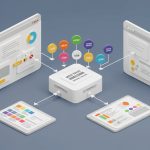
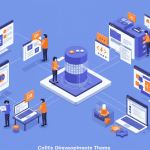

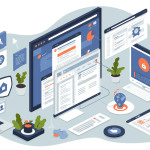

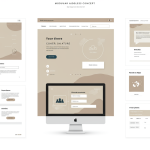

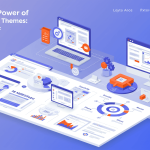
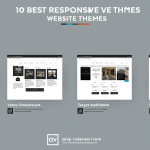





No Comments